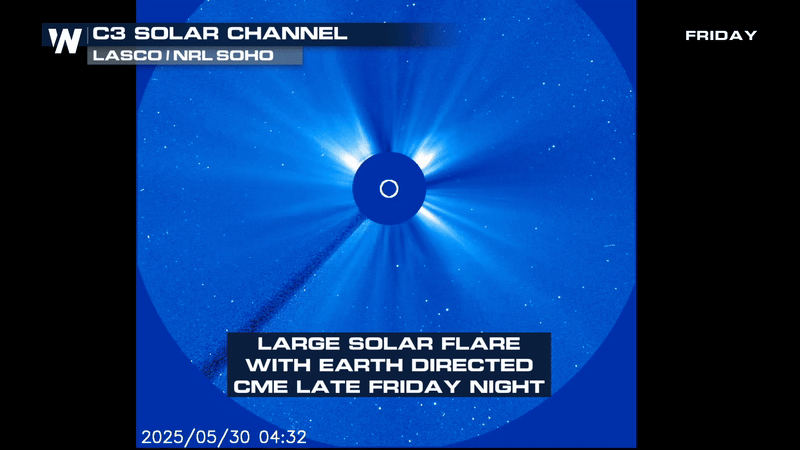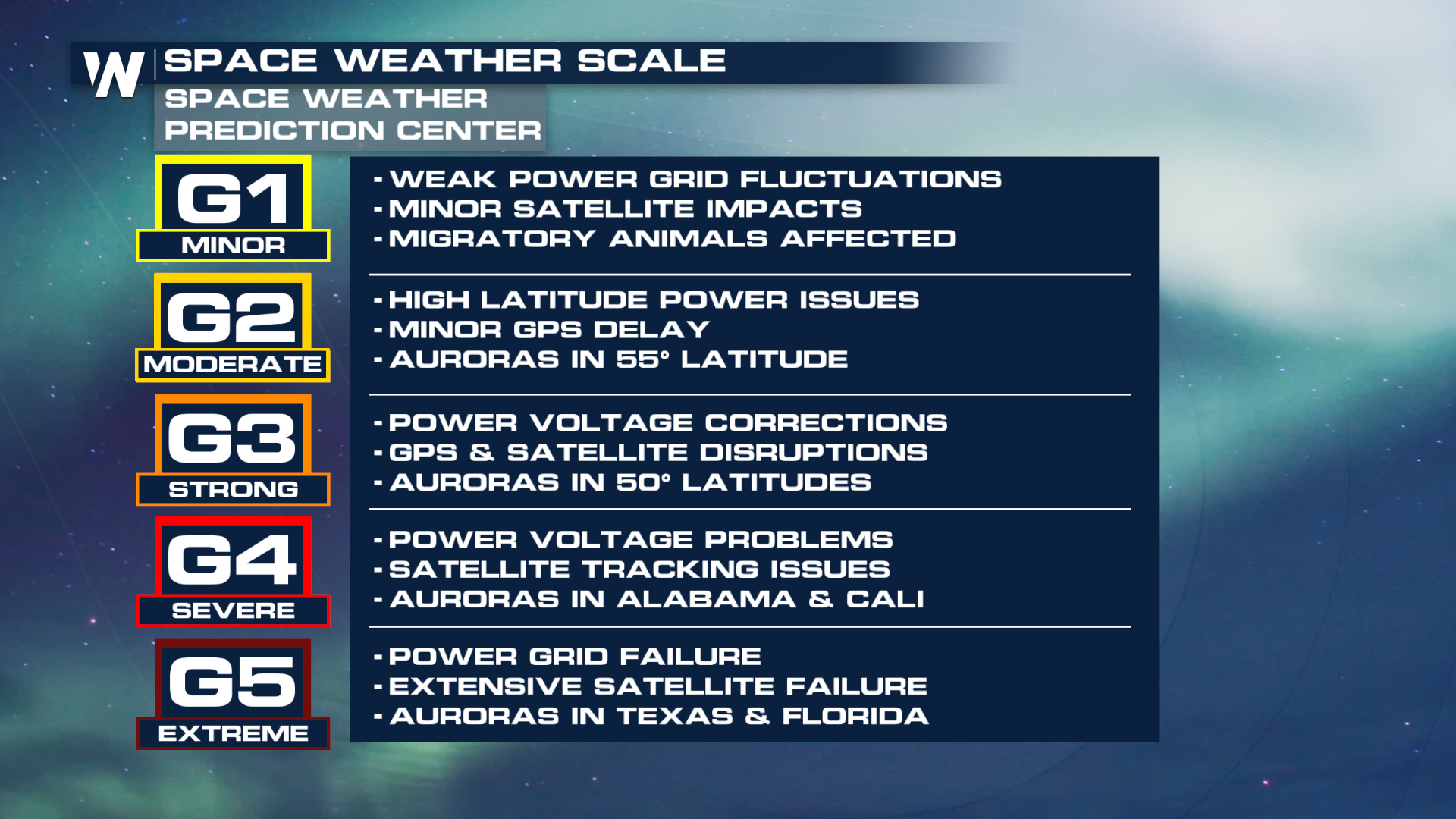Aurora Borealis Could Reach the Mid-Latitudes
Even through summer is approaching, the northern lights may still dazzle millions into Monday morning. A powerful solar flare erupted from sun late Friday night, with an Earth directed coronal mass ejection (CME) expected to arrive sometime Sunday.

Astronomers are in a wait and see mode for how strong the CME may be, but many are hopeful it will be strong enough to bring aurora borealis down to the mid-latitudes, including a large portion of the north United States late Sunday into Monday. The Space Weather Prediction Center is expected G3 conditions, with the potential for G4 conditions by the 2nd, or early Monday morning. Their latest forecast shows the potential to view the aurora down to I-80 in Iowa and Nebraska.

G4 conditions would mean that Aurora viewing would be possible even further south, especially for long-exposure photography. It is worth noting the timing and strength of a CME is difficult to forecast, but satellites away from the Earth will be able to confirm if and when a CME impact is expected with about 30 minutes of lead time for Earthlings. This means if you plan to try to view the aurora, stay up to date with the Space Weather Prediction Center's latest conditions.
Cloud Forecast
Even if the aurora may be visible overhead, it doesn't mean clouds won't ruin your fun. For the northern and mid-latitudes, there will be some cloud cover over the northern Rockies, Great Lakes, and northern New England.